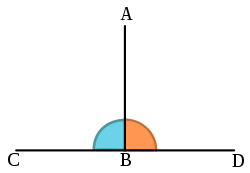The 1,3-dipolar cycloaddition is a chemical reaction between a 1,3-dipole and a dipolarophile to form a five-membered ring. The earliest 1,3-dipolar cycloadditions...
65 KB (6,396 words) - 07:16, 24 May 2025
The azide-alkyne Huisgen cycloaddition is a 1,3-dipolar cycloaddition between an azide and a terminal or internal alkyne to give a 1,2,3-triazole. Rolf...
21 KB (2,639 words) - 20:31, 22 July 2024
(4 + 2)-cycloaddition, the 1,3-dipolar cycloaddition is a (3 + 2)-cycloaddition and cyclopropanation of a carbene with an alkene a (2 + 1)-cycloaddition. A...
12 KB (1,317 words) - 10:26, 25 May 2025
a concerted [3+2] cycloaddition to the triple bond in a cyclooctyne in the same mechanism as the Huisgen 1,3-dipolar cycloaddition. Substituents other...
48 KB (5,452 words) - 15:44, 23 May 2025
The Diazoalkane 1,3-dipolar cycloaddition is a 1,3-dipolar cycloaddition (an organic reaction) between a 1,3-dipole diazo compound (notably diazomethane)...
2 KB (180 words) - 17:43, 10 November 2020
ylides are nitrogen-based 1,3-dipoles, consisting of an iminium ion next to a carbanion. They are used in 1,3-dipolar cycloaddition reactions to form five-membered...
18 KB (1,988 words) - 01:46, 19 April 2024
that fulfill the requirements of bioorthogonality, including the 1,3-dipolar cycloaddition between azides and cyclooctynes (also termed copper-free click...
44 KB (5,098 words) - 08:36, 16 March 2025
cycloaddition process. This reaction is a 1,3-dipolar cycloaddition, in which the nitrone acts as the 1,3-dipole, and the alkene or alkyne as the dipolarophile...
7 KB (923 words) - 22:24, 27 September 2024
reactants in 1,3-dipolar cycloadditions. The dipole has at least one resonance structure with positive and negative charges having a 1,3 relationship...
3 KB (228 words) - 16:45, 1 November 2023
in 1,3-dipolar cycloadditions. Also 1,4-dipolars, 1,5-dipolars, and so on exist. Phosphonium ylide Diazomethane Carbonyl oxide Zwitterion Ylide 1,3-dipole...
3 KB (325 words) - 10:05, 14 May 2025
Ylide (section Dipolar cycloadditions)
phosphorus) but there are more. Some ylides are 1,3-dipoles and interact in 1,3-dipolar cycloadditions. For instance an azomethine ylide is a dipole in...
10 KB (1,152 words) - 18:33, 21 August 2024
Woodward–Hoffmann rules (redirect from 2+2 Cycloaddition)
(4+2)-cycloaddition) is [π4s + π2s]. The 1,3-dipolar cycloaddition of ozone and an olefin in the first step of ozonolysis (a (3+2)-cycloaddition) is [π4s...
93 KB (11,920 words) - 14:03, 12 December 2024
that fulfill the requirements of bioorthogonality, including the 1,3-dipolar cycloaddition between azides and cyclooctynes (also termed copper-free click...
16 KB (2,695 words) - 18:06, 20 May 2025
Isoindoline (redirect from 1,3-Disubstituted Isoindolines)
Isoindolines via One-Pot Sequential Cu(I)-Catalyzed Asymmetric 1,3-Dipolar Cycloaddition/Aromatization DOI: 10.1021/ol302987h Asymmetric organocatalytic...
3 KB (275 words) - 16:19, 5 August 2024
with triethylamine to activate nitro groups to undergo (C,O) 1,3-dipolar cycloaddition (as opposed to O,O). The nitro group (RCH2NO2) is converted to...
4 KB (252 words) - 15:05, 24 March 2025
achievement was the development of the 1,3-dipolar cycloaddition reaction, also called the Huisgen cycloaddition. Huisgen was born in Gerolstein in Rhineland-Palatinate...
9 KB (713 words) - 15:34, 24 May 2025
reaction Cycloaddition 1,3-Dipolar cycloaddition Azide-alkyne Huisgen cycloaddition Diels–Alder reaction Nitrone-olefin (3+2) cycloaddition Staudinger...
8 KB (574 words) - 12:46, 7 March 2025
Nitrone (section 1,3-dipolar cycloadditions)
application is intermediates in chemical synthesis. A nitrone is a 1,3-dipole used in cycloadditions, and a carbonyl mimic. Nitrones, as a tetrasubstituted double...
6 KB (493 words) - 15:06, 21 May 2025
following (3+2) cycloaddition protocols. A common technique for unsubstituted triazoles is the Huisgen azide-alkyne 1,3-dipolar cycloaddition: a azide and...
10 KB (1,024 words) - 23:01, 1 May 2025
the Curtius rearrangement. Rolf Huisgen described the eponymous 1,3-dipolar cycloaddition. The interest in azides among organic chemists has been relatively...
28 KB (2,857 words) - 13:45, 22 May 2025
Ozonolysis (category Cycloadditions)
or ketone (3) in a retro-1,3-dipolar cycloaddition. The oxide and aldehyde or ketone react again in a 1,3-dipolar cycloaddition, producing a relatively...
16 KB (1,749 words) - 14:19, 25 May 2025
copper(I), it allows for quantitative, regioselective formal Huisgen 1,3-dipolar cycloadditions between alkynes and azides, in a variety of aqueous and organic...
4 KB (279 words) - 02:00, 22 August 2022
been widely evaluated as a precursor to heterocycles. including 1,3-dipolar cycloadditions. Hirst, Gavin C. (2001). "Methyl Propiolate". Encyclopedia of...
3 KB (214 words) - 22:29, 24 September 2024
R2C=S=S, they are more usefully classified as 1,3-dipoles and indeed participate in 1,3-dipolar cycloadditions. Thiosulfines are proposed to exist in equilibrium...
8 KB (941 words) - 19:17, 13 September 2024
Diazo (section In cycloadditions)
azides using phosphines: Diazo compounds react as 1,3-dipoles in diazoalkane 1,3-dipolar cycloadditions. Diazo compounds are used as precursors to carbenes...
14 KB (1,510 words) - 15:18, 25 April 2025
Prato reaction (category Cycloadditions)
The Prato reaction is a particular example of the well-known 1,3-dipolar cycloaddition of azomethine ylides to olefins. In fullerene chemistry this reaction...
9 KB (896 words) - 18:06, 27 November 2023
reaction of münchnones and alkynes. The reaction mechanism involves 1,3-dipolar cycloaddition followed by loss of carbon dioxide by a retro-Diels–Alder process...
34 KB (3,197 words) - 22:33, 22 May 2025
U V W X Y Z See also External links 1,2-Wittig rearrangement 1,3-Dipolar cycloaddition 2,3-Wittig rearrangement Acetalisation Acetoacetic ester condensation...
37 KB (3,428 words) - 16:27, 11 November 2024
Ceramics (1–6): 291. Huisgen, R. (1961). "Centenary Lecture – 1,3-Dipolar Cycloadditions". Proceedings of the Chemical Society of London: 357. doi:10.1039/PS9610000357...
19 KB (2,194 words) - 08:17, 24 May 2025
1,3-dipoles represented by structures 1 and 3. A major use is in heterocyclic synthesis. E.g. with alkynes they generate pyrazoles in a 1,3-dipolar cycloaddition...
3 KB (198 words) - 14:28, 26 March 2025












